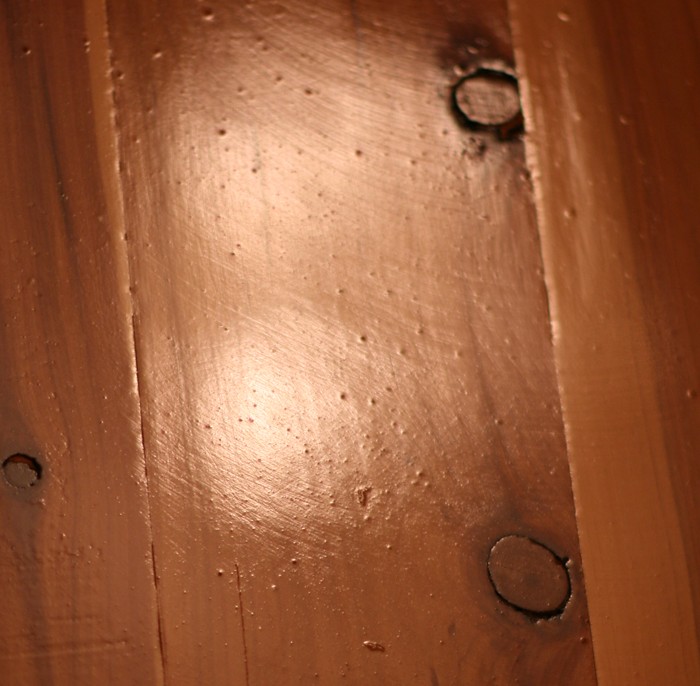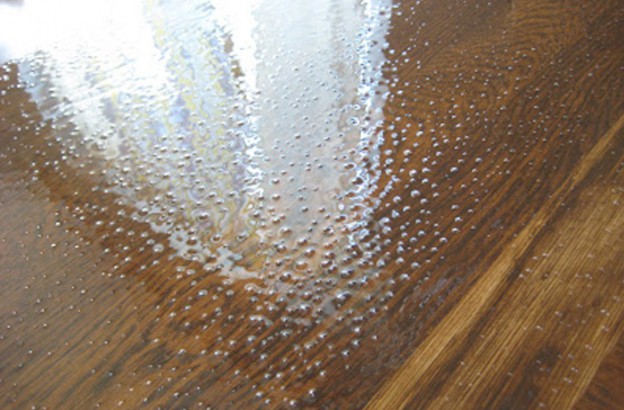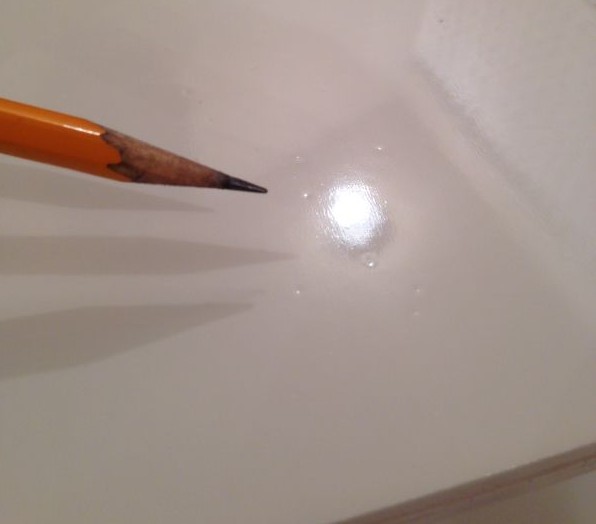Often, air bubbles or punctures in the film can occur after the application of finishing materials with the spray gun. Although similar, these defects have different causes. I have chosen to present them together because they are often confused.

The film has included air bubbles. Why it happens and how we can prevent or fix it
Air bubbles may appear in the varnish film (I will use this generic term for all film-forming materials) for various reasons, before or during application. If the time required for de-icing is not sufficient, the temperature in the workspace is too high or the ventilation is too strong, Drying occurs before air leaves the film. Let's see what causes these bubbles and what solutions can be found to avoid or remedy the defect.
Mixing the material with air. During the stirring of the material for use, the lacquer is mixed with a quantity of air. To avoid this air remaining in the film, the mixture must be left for a while before application. Another way to remove air from the interior is to filter the material or use defoamers. Sometimes the air mixture appears in the pump itself. In this case the pump should be checked and recalibrated.
Temperature too high in the workspace. In summer, when it is very hot and the temperature rises well above the recommended temperature (20°C), the defect occurs frequently. In this case it is recommended to use slower thinners which delay drying and give the air time to escape from the film.
Other causes of the defect are too high a temperature or air speed in the drying area and too short a de-icing time. In this case it is recommended to reduce the temperature and air speed in the drying zone and increase the flash-off time. In the case of automatic finishing lines, the flash-off time is increased by reducing the speed of the conveyor belt.

Wood air. When the wood is very dry, some of the water is replaced by air. The amount of air coming out of the wood is greater and some of it may remain in the film. It is best to use wood with a recommended moisture content for wood used indoors of 8-12% (exception musical instruments) , and the pieces of furniture in white should be kept in temperature and humidity controlled areas before finishing.
Incorrect spraying or high viscosity. Incorrect spraying, i.e. too short a distance, too high a viscosity or too low a varnish temperature, can also lead to bubbles. As with orange peel, the distance between the piece and the gun must be min 25 cm and the pressure 2,8-3 at. when spraying manually.
Persistent foam from flow coating. In the case of flow-coating of waterborne products, a very persistent foam is usually formed, which can remain embedded in the film and in the case of stains can lead to uneven colouring. The use of antifoam products is recommended.

Prick in the film
The appearance of the film in the casestings it's as if it's been pricked with a fine needle. The defect can be mistaken for air bubbles, especially after sanding between coats. Unlike bubbles, punctures are not evenly spread, they appear clustered or here and there on the surface, they are also very visible immediately after spraying (before drying).
The defect occurs in solvent-based varnishes when there is accumulated water on the spray paths (in compressors, hoses) and is more common in very hot periods with high humidity. It is advisable to fit filters to the compressor and air lines and to check the installations more often.
The same defect may also occur if water-based products are sprayed in the same rooms as solvent-based products or when they are sprayed immediately after solvent-based products in the same room. Fine solvent particles persist in the atmosphere for some time. If they are not removed by the exhaust system they get on the film and cause stinging. All routes through which solvent-based material has passed must be thoroughly washed with acetone and then with water (special thinner) before applying water-based products.
I hope you find the information useful. If you have any questions or queries, please leave them in the space below. I'm sure I'll reply.
Other finishing flaws you can read about:



























[...] Air bubbles. Prickling in the film [...]
[...] Air bubbles. Prickling in the film [...]
[...] Air bubbles. Prickling in the film [...]
[...] Air bubbles. Prickling in the film [...]